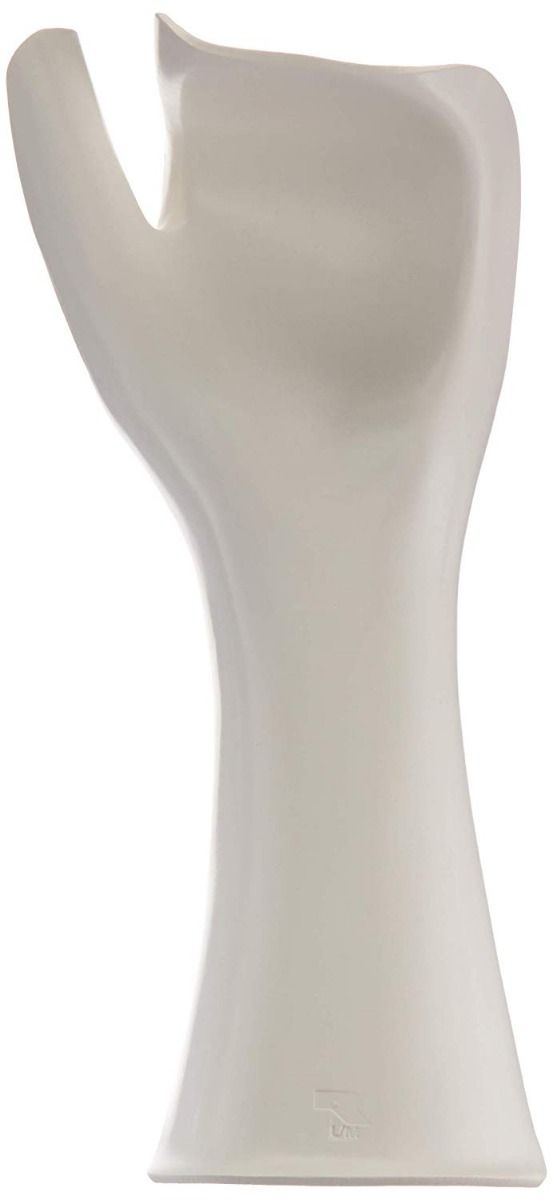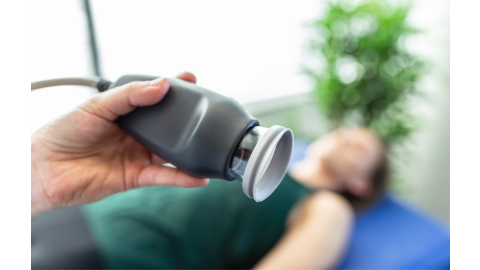Splints come in all shapes, sizes and even names. Whether you're looking for a quick refresher or want to learn the basis, this extensive splint and orthosis guide will help!
- Orthosis vs. Splint
- Orthosis Types
- Orthosis Fabrication Types
- Orthosis Materials
- Want to learn more about orthosis fabrication? Watch these webinars!
Orthosis vs. Splint
Many people use the terms “orthosis” and “splint” interchangeably. But the Centers for Medicare and Medicaid Services (CMS) has defined the terms differently. It’s important for occupational and physical therapists to know the difference to ensure reimbursement.
According to CMS a splint refers to casts and strapping material used for reduction of fractures and dislocations. These are commonly referred to as “casts”.
An orthosis is used to describe a single, rigid or semi-rigid device that supports a weak/deformed body part or restricts/eliminates motion in a diseased/injured body part. These devices were commonly called splints, braces, wraps, or supports previously. It’s this device that the rest of this guide will focus on.
|
|
Orthosis Types
There are a variety of different orthosis types (still commonly called “splints”) including:
Static Splint

A static splint has no moving parts. It can be used for support, protection, or correction. This type is often used to support normal hand arches.
Serial Static Splint

A serial static splint helps increase tissue length by positioning soft tissues toward the end of their available range of motion.

A dynamic splint has a static base onto which levels, springs, or pulleys can be attached. This allows the therapist to adjust the tension to apply a low-level long-duration load to help slowly improve range of motion.
Static Progressive Splint

A static progressive splint applies a low-load prolonged stretch at the end of the available movement. It uses non-elastic components to place tension on the joint/tissue with the goal of improving passive motion.
Orthosis Fabrication Types
Depending on how the orthosis is fabricated it may be called “custom fabricated” “custom fitted” or “prefabricated”.
Custom Fabricated

A custom fabricated orthosis is created for one specific patient. It requires substantial work using materials including plastic, metal, leather, or cloth, which may need to be molded, bent, sewn, or drilled. It may be fabricated based on xrays, tracings, measurements, or clinically derived or rectified castings. These orthoses are commonly fabricated out of thermoplastic splinting sheets which may be flat or pre-cut sheets.
Custom Fitted

A custom fitted orthosis is already fabricated without one specific patient in mind. A therapist then customizes the orthosis to fit a specific patient by trimming, molding, or bending, with or without heat. Many pre-formed splints can be custom fitted using a heat gun.
Prefabricated

A prefabricated orthosis may also be called “off-the-shelf”. These require minimal adjustments and are easy to don and doff. They may not require a therapist’s expertise to adjust the orthosis.
|
|
Want to learn more about orthosis fabrication? Watch these webinars!
|
|
Still have questions about splint fabrication? Ask a clinician!
References
NC Medical. (2011). Splint and Orthosis Terms You Should Know. Retrieved from https://bit.ly/3e8wVwj
Medical Disclaimer: The information provided on this site, including text, graphics, images and other material, are for informational purposes only and are not intended to substitute for professional medical advice, diagnosis or treatment. Always seek the advice of your physician or other healthcare professional with any questions or concerns you may have regarding your condition.








 France
France Australia
Australia










